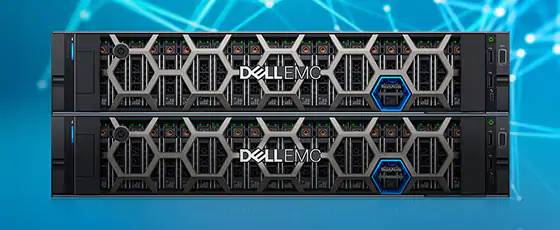When it comes to cloud computing, there’s little doubt that we’re in a hybrid world. In fact, that point comes through loud and clear in two different studies published this year by TECHnalysis Research. Both the Hybrid and Multi-Cloud Strategies in the Enterprise report and recently published Pandemic-Based IT Priority Shifts report highlight the high degree of usage, strategic importance and budgets spent on hybrid computing models. In fact, in many instances, hybrid cloud is considered more important than the older and more established public cloud computing methodologies.
The reason? While every company would certainly like to be running nothing but containerized, cloud-native applications, the reality is that almost none do so. There’s simply too much legacy software (typically still close to 50% of most organization’s applications) and hardware datacenters that companies need to use for a variety of reasons, including regulatory, security, cost and more. In the meantime, private clouds and hybrid models that combine or connect private cloud workloads with public cloud workloads serve as a critical steppingstone for most organizations.
As a result, we’ve seen many different tech vendors create new hybrid cloud offerings recently to tap into the burgeoning demand. At the company’s partner-focused Inspire event, Microsoft unveiled several new hybrid cloud-focused additions to its Azure cloud computing platform. In particular, they announced additional capabilities for Azure Stack HCI—the local, on-premises compatible version of Azure that runs on specialized, Microsoft-certified hardware appliance devices from hardware partners like Dell EMC, HPE and Lenovo.
These hardware appliances are built using an architecture called hyperconverged infrastructure, or HCI, that essentially combines all the elements of a data center, including compute, storage and networking, into a single, software-defined box. The beauty of the HCI approach is that it virtualizes all these elements so that simple, off-the-shelf servers can be organized and optimized in a way that improves their performance, functionality, and reliability. For example, virtualizing the storage provides SAN (Storage Area Network)-like capabilities and dependability to an HCI environment without the costs and complexities of a SAN. Similarly, virtualizing the networking lets an HCI device offers the capabilities of a load balancer via software, again without the costs and complexities of purchasing and deploying one. Best of all, these software-defined datacenter capabilities can both scale up to large datacenter environments or scale down for branch offices or other edge computing applications.
While Microsoft has talked about Azure Stack HCI before, they announced several new capabilities at Inspire. Notably, Azure Stack HCI is now a fully native Azure service, which means you can now use the Azure Portal as a combined management tool for public cloud Azure computing resources along with any local Azure Stack HCI resources, such as virtual machines, virtualized storage and more. This allows IT administrators the classic “single pane of glass” UI for monitoring and managing all their different public, private and hybrid-cloud-based workloads. In addition, by making Azure Stack HCI a native Azure service, it makes it significantly easier to use other Azure PaaS (Platform as a Service) capabilities, such as Azure Backup and Azure Security Center, with private cloud workloads. In other words, it essentially allows companies to pull these two “worlds” together in ways that weren’t possible before.
One particularly nice feature of these new Microsoft-certified systems is that they can be purchased with the Azure Stack HCI software already installed and configured on them, making them about as easy to set up and configure as possible. You literally plug them in and turn them on and they’re ready to install, making it suitable for smaller businesses, branch offices or other locations where there may not be dedicated or specially trained IT staff. In addition, Microsoft offers the option of installing the new Azure Stack HCI on existing datacenter hardware if it meets the necessary hardware certification requirements.
Combining the software-defined datacenter (SDDC) capabilities inherent in HCI along with the cloud-native opportunities of Azure Stack initially was a big step forward in getting companies to modernize their datacenters from both a hardware (HCI) and a software (Azure) perspective. While it may seem logical to do so, those two modernization efforts don’t necessarily go hand-in-hand, so it was an important step for Microsoft to take. In doing so, they made the process of migrating more apps to the cloud (and, hopefully, modernizing them along the way) much easier.
This is particularly important for companies who may have been a bit slower in moving their applications to the cloud and/or those organizations who may have run into roadblocks on some of their legacy applications. Not all organizations have all the skillsets they need in their IT organizations to do this kind of work, so the more efforts that can be done to make the process easier, the better. With their latest additions to Azure Stack HCI, Microsoft is moving down the path of further simplification and helping draw the worlds of legacy applications and hardware and the cloud a little bit closer together. No matter how you look at it, that’s a step in the right direction.

I think the admin of this site is really working hard for his website, since here every stuff is quality based data.
Nice post. I learn something new and challenging on blogs I stumbleupon on a daily basis.
For the reason that the admin of this site is working no uncertainty very quickly it will be renowned due to its quality contents.cnn usa news live stream
Definitely what a great blog and instructive posts I definitely will bookmark your site.All the Best! .<a href="https://www.clients1.google.com.hk/url?sa=i
Very well presented.very quote was awesome and thanks for sharing the content.-vox live schauen
There is some nice and utilitarian information on this site.67 Set Dog Travel Bag Large Pet Travel Kit for Supplies Includes 2 Food Containers 1 Travel Organizer for Dogs 2 Collapsible Bowls 1 Treat Pouch Dog Weekend Overnight Travel Bag Luggage – Hot Deals
very satisfying in terms of information thank you very much. – womens hey dudes